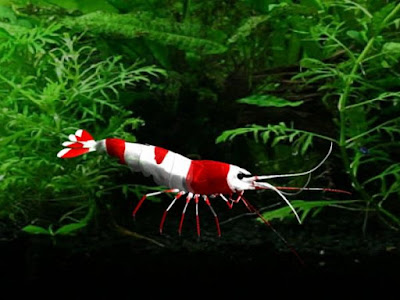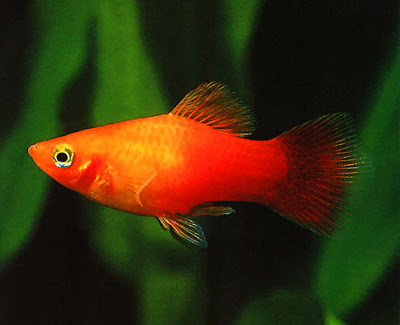Awesome Algae Eating Fish for Aquarium: Green Phantom Pleco
Awesome
Algae Eating Fish for Aquarium: Green Phantom Pleco – Greek, hemi = the half. While the Greek,
agkistron = hook, is considered to be the cause of the term ancistrus,
hemiancistrus can be taken to mean these species possess a part (not just HALF)
of the top features of the genus Ancistrus, but not ALL of the features. This
specific epithet refers to its olive green colour in life.
 |
Photo copyright from piranha-info.com
|
Awesome Algae Eating Fish for Aquarium: Green Phantom Pleco
The green colour type of
the fish can only actually be confused with Baryancistrus demantoides. The
secret to tell these two apart is that the dorsal fin and the adipose fin are
joined in Baryancistrus species, and separated in the this species.
Ranges in colouration
from blueish green to yellowish green (which correlates to how far south on the
Rio Orinoco the fish was collected). Body and head spots are changeable within
these colour sorts. May be the same species as L128.The green colour type of
this fish can only actually be confused with Baryancistrus demantoides. The
secret to tell these two apart is that the dorsal fin and separated in the this
species, and the adipose fin are connected in Baryancistrus species.
Serving Diet
Intestine evaluations of
wild specimens shown the contents to be composed of mineral matrix’ and a
‘mixed brown orgamic, within which only strands of filamentous algae might be
recognized. This suggests that the species feeds by scraping on sediment and
periphyton from submerged surfaces.
In the aquarium aufwuchs
should therefore be enabled to colonise all surfaces except the viewing pane so
that the fish can browse naturally, even though the dietary plan needs to be
supplemented with high-quality, sinking dried foods (preferably with additional
vegetable content), live or frozen chironomid larvae (bloodworm) and similar,
plus slices of fresh fruit and vegetables and also the occasional defrosted
prawn or shrimp.
Aquarium size
This moderate-sized
Loricarid prefers a dimly lit tank with a good number of hiding places, either
created with plants, drift wood, stone or manufactured (pleco spawning) caves.
Tank or larger: it might be aggressive towards other bottom dwellers when
acceptable hiding places are lacking, and this fish can be very territorial.
When kept as only catfish in an aquarium, a tank size of 40x16"
(100x40cm.)
Behaviour and Compatibility
Juveniles are
comparatively peaceful but males in particular become increasingly intolerant
of conspecifics as they respond aggressively towards every other fish viewed as
a threat that is territorial, and usually age.
It really is therefore
best kept alongside species that inhabit other aspects of the tank, with
medium-to-large sized characids particularly acceptable. A group may be kept in
bigger aquaria supplied sufficient territorial space can be obtained and visual
barriers considered when laying out the décor.
Suggested Tankmates
This fish is a great
pleco for a community tank as it is going to adapt to less frenzied water
conditions. If you do wish to attempt water that is faster, silver dollars and
Semaprochilodus characins of numerous types are a good option for mid water
companies.
Breeding
This cavern-spawning
species continues to be bred in the home aquarium. Provide an array of narrow
caverns built from your rockwork or use PVC conduits /clay mating tubes.
Anticipate the eggs to hatch within 3-5 days (temperature dependent).
Added advice'
Among hobbyists, this
species is described as L200, which, despite an excellent amount of
similarities, isn't exactly the same species als the 'Hi-Fin'-variant. Both
varieties are found in an identical place and originally thought to be the same
species. In 2005 L200 was described, and a seperation was made involving the
two kinds that were different. The species depicted here, having a standard
dorsal fin, is Hemiancistrus subviridis (which is more closely linked to the up
to this day undescribed L128 Blue Phantom Pleco, also a Hemiancistrus-species),
and the variant together with the high, shark-like dorsal fin, is Baryancistrus
demantoides.



Komentar
Posting Komentar